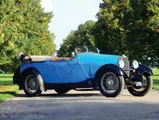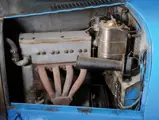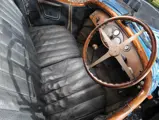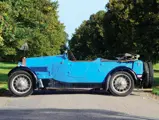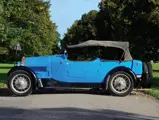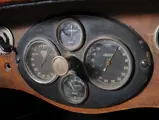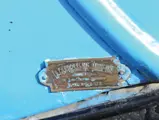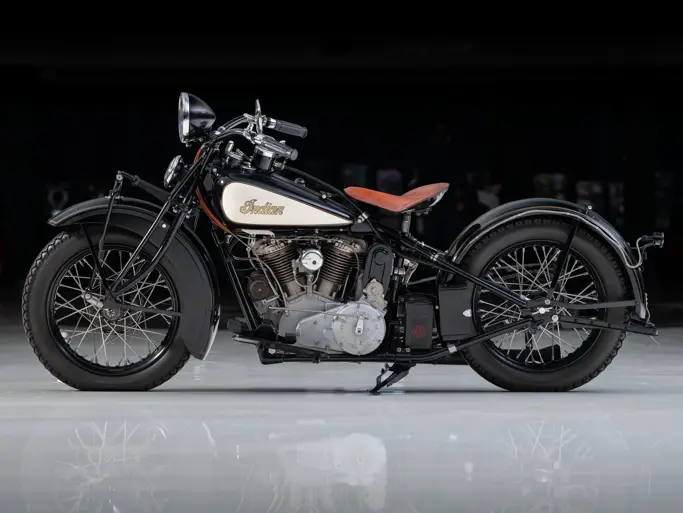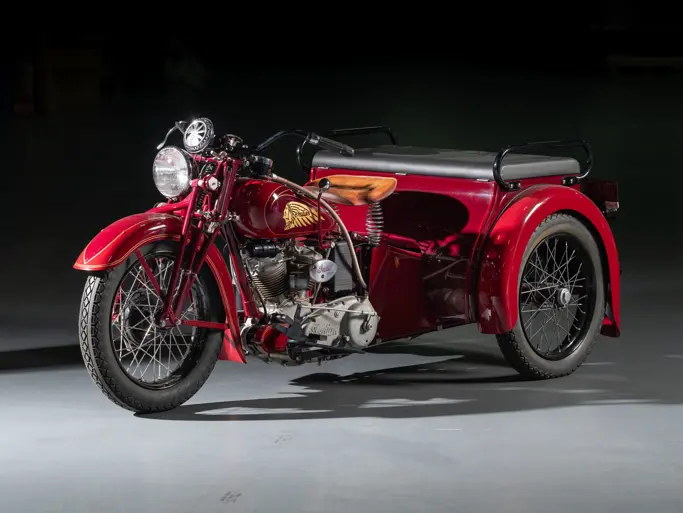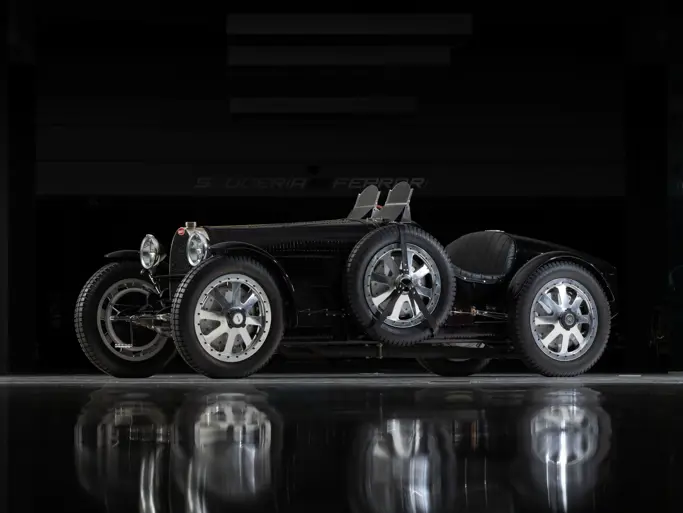Aalholm Automobile Collection
1931 Bugatti Type 40A Tourer by Carrosserie Moderne
{{lr.item.text}}
kr.1,904,000 DKK | Sold
 | Nysted, Denmark
| Nysted, Denmark
{{internetCurrentBid}}
{{internetTimeLeft}}

Intended as a replacement for the Brescia Bugatti, the four-cylinder Type 40 was introduced in May 1926. After 780 had been built, a successor, Type 40A, with a larger, 1,627 cc engine, was launched in March 1931. This was achieved with one block from the eight-cylinder Type 49 engine, with bore increased to 72 mm. In the process, the 49’s twin ignition was replaced with a single-plug arrangement. Just 32 examples of the Type 40A were built through mid-1933.
Chassis 40905 was built in April 1931. In response to an order from Bordeaux agent Pierron, it was dispatched there on 19 June and invoiced at 29,000 French francs.
The car’s first owner is unknown, but he commissioned local coachbuilder La Carrosserie Moderne to fit the four-door, four-seat tourer body with open-framed windscreens, hood, boot and twin rear-mounted spares. At some point it came into the ownership of Michel Boulart, of Linxe, in the Landes region of France, about 120 km from Bordeaux. Boulart was the owner listed in Hugh Conway’s 1962 Bugatti Register, and Conway had seen the car that summer whilst touring France. An article in Bugantics, a magazine for the Bugatti Owners’ Club, described it as “a very pretty little Type 40A touring car” and included a photograph.
By the time of Conway’s updated 1973 Register, the car had been acquired by Baron J.O. Raben-Levetzau for the Aalholm Musuem, where it received care and attention and remained roadworthy until the museum finally closed.
Presented in French Blue with black wings and valences, this Type 40A is in original condition and bears the coachbuilder’s plaque on the left side of the scuttle. It is upholstered in black leather, in the front and rear, and the instrument panel, steering wheel and body fittings are clearly original. The wood dashboard is fitted with Marchal switches and original instruments in a central oval panel. The unusual body has a jaunty look, with a laid-back scuttle line reprised in the contour of the doors. It would make a fantastic Bugatti for any collector.
Oprindeligt tænkt som en erstatning for Brescia Bugatti'en, blev den fire-cylindrede Type 40 introduceret i maj 1926. Efter at der var bygget 780 eksemplarer, blev efterfølgeren, Type 40A med en større 1,627 cc motor, lanceret i marts 1931. Dette opnåedes med en blok fra den otte-cylindrede Type 49 motor, hvor den indvendige diameter blev sat op til 72 mm. Ved samme lejlighed blev 49’erens dobbelttænding erstattet af en enkelt-tændrørsordning. Blot 32 eksemplarer af Type 40A'en blev bygget indtil midten af 1933.
Chassis 40905 blev bygget i april 1931. Som svar på en ordre fra Bordeaux–forhandleren Pierron blev den sendt dertil den 19. juni og faktureret for 29,000 franske franc.
Bilens første ejer er ukendt, men han afgav ordre hos den lokale karossseribygger La Carrosserie Moderne om at føje uindrammede forruder, tag, bagagerum og to reservehjul til karosseriet med de fire døre og fire sæder. På et tidspunkt blev den overtaget af Michel Boulart fra Linxe i Landes-regionen i Frankrig, omkring 120 km fra Bordeaux. Boulart var registreret som ejer i Hugh Conway’s Bugatti register fra 1962, og Conway havde set bilen samme sommer da han kørte gennem Frankrig. En artikel i Bugantics, et tidsskrift for Bugatti-ejere, beskrev den som “en meget køn lille Type 40A Touring bil” og inkluderede et fotografi.
Da Conways opdaterede register udkom i 1973, var bilen blevet købt af Baron J.O. Raben-Levetzau til Aalholm Automobil Museum, hvor den fik opmærksomhed og forblev køreklar indtil museet omsider lukkede.
Denne Type 40A, som fremstår i blå med sorte skærme og beskyttelsesplader er i original stand og bærer karosseribyggerens mærke på venstre side af køleren. Den er polstret i sort læder for- og bag, og instrumentbrættet, rattet og karosseridelene er tydeligvis originale. Træinstrumentbrættet er indsat med Marchal-knapper og oprindelige instrumenter i et centralt ovalt panel. Det usædvanlige karosseri har et friskt udseende med en afslappede kurver der går igen i dørenes udformning. Den ville udgøre en fantastisk Bugatti for enhver samler.

